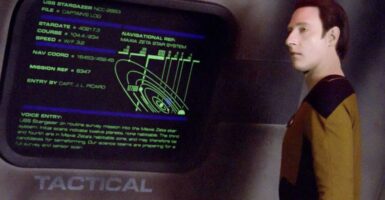The Greatest Twilight Zone Episodes Of All-Time
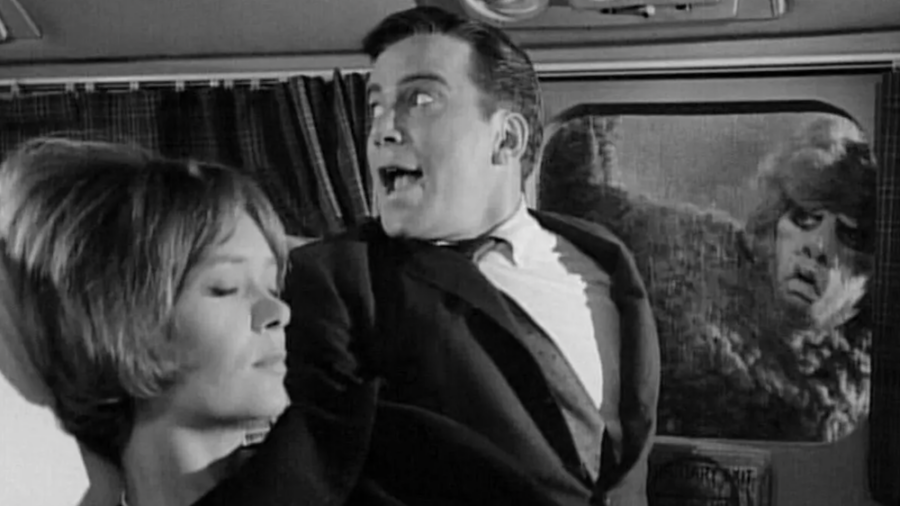
“You are about to enter another dimension—a dimension not only of sight and sound but of mind…” When it comes to TV sci-fi/horror anthologies, no one did it better than The Twilight Zone. Evil hitchhikers, disgraced mall Santas experiencing a Christmas miracle, The Twilight Zone had it all.
As blasphemous as it sounds, not all the episodes were bangers. Some episodes failed to nail the all-important “twist” ending. For every “Oh my god it was Earth the whole time!” there’s a lame “gotcha,” like a woman burning to death as the Earth gets closer to the sun, who wakes up freezing to death because the Earth is actually moving away from the sun.
That’s why we took it upon ourselves to narrow down The Greatest Twilight Zone episodes of all time.
Will the Real Martian Please Stand Up?
(Original Series, Season 2, Episode 28)
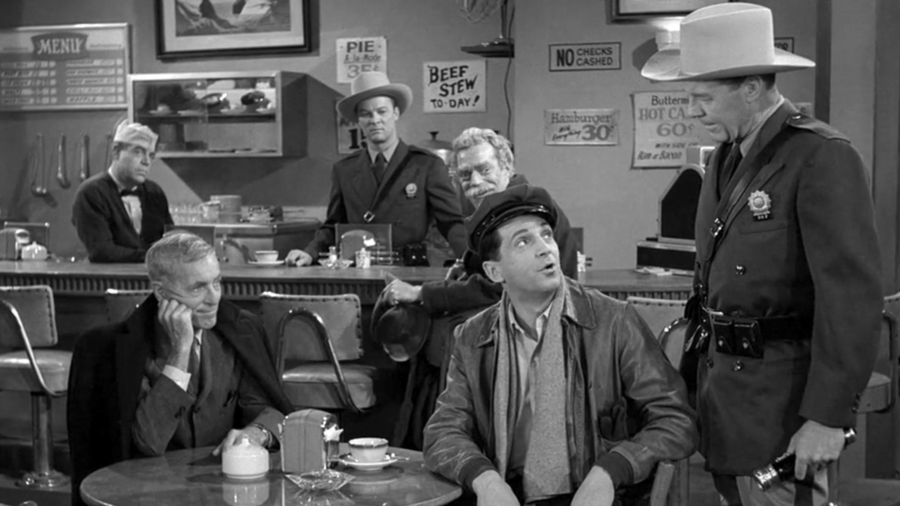
Synopsis: A group of bus passengers is forced to wait out a blizzard at a local diner. At the same time, two cops are searching for the owner of a crashed U.F.O.
What makes “Will the Real Martian Please Stand Up?” so great is that it works as a subversion of the Twilight Zone‘s already subversive “twist ending.”
Anyone who’s ever seen an episode of The Twilight Zone can guess that one of the people from the bus will turn out to be the alien. What isn’t so easy to guess is that right after the passenger reveals that he’s really a Martian scouting the Earth for takeover, the diner owner reveals himself to be an alien, too—from Venus.
What follows is Rod Serling’s version of an UNO reverse card. The Martian—the sinister reveal in any other Twilight Zone episode—finds himself at the mercy of the Venusian, who gleefully informs him that his Martian invasion force has been intercepted and destroyed by a fleet from Venus.
Only The Twilight Zone could manage to put a twist on a twist.
Nightmare at 20,000 Feet
(Original Series, Season 5, Episode 3)

Synopsis: A man who recently had a mental breakdown sees a gremlin on the wing of an airplane that may or may not really be there.
“Nightmare” is a brilliant slice of paranoid terror that plays on two common fears: the fear of flying and the fear of monsters. And 1983’s Twilight Zone: The Movie did it better.
Don’t get us wrong, William Shatner is great as a frightened airline passenger who sees a creature outside his plane that no one else can see, but the Shatman’s performance simply pales in comparison to the one John Lithgow gives in the film version.
Sadly, today the Twilight Zone movie is largely remembered for the real-life tragedy that happened on set and not director George Miller’s superior version of “Nightmare at 20,000 Feet.”
It’s a shame because when taken on its own, it’s one of the best horror-anthology segments ever made with a gremlin so scary it makes the original Twilight Zone‘s monster look like a cross between an Ewok and a Teddy bear.
Living Doll
(Original Series, Season 5, Episode 6)
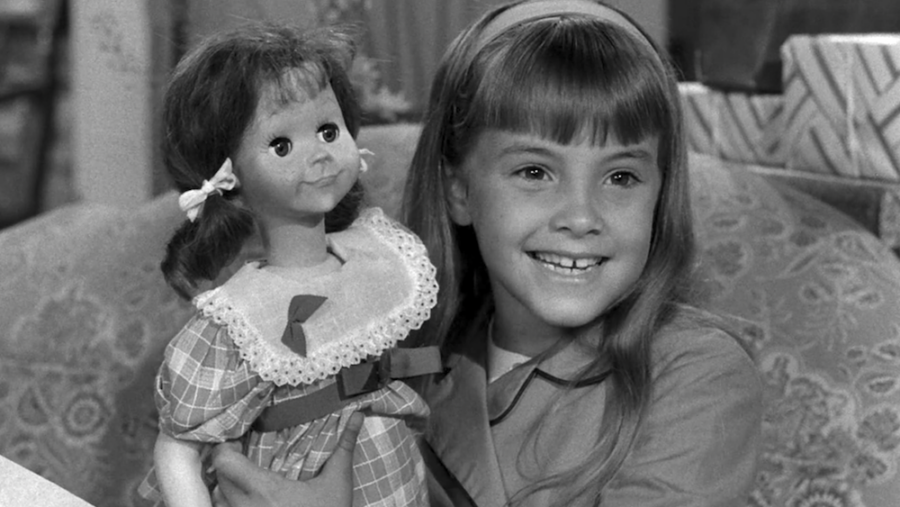
Synopsis: A creepy doll named Talking Tina threatens to kill a little girl’s stepfather.
As great as the first Child’s Play movie was, The Twilight Zone did the killer doll thing twenty years earlier and, in some ways, better. Chucky’s got personality, sure, but he suffers from Freddy Krueger syndrome: the more he talks and jokes around, the less scary he is.
Talking Tina, on the other hand, gets straight to the point with phrases like “I hate you,” and “I’m going to kill you!”
Lacking the special effects capability to portray a doll that walks around and actively commits murder actually works in The Twilight Zone‘s favor. We don’t actually see Tina crawl up the stairs and place herself conveniently where Stepfather Telly Savalas is going to place his foot.
She’s just suddenly there, silently keeping her promise and making it look like an accident in the process. It’s all of the creep with none of the quips.
It’s a Good Life
(Original Series, Season 3, Episode 8)
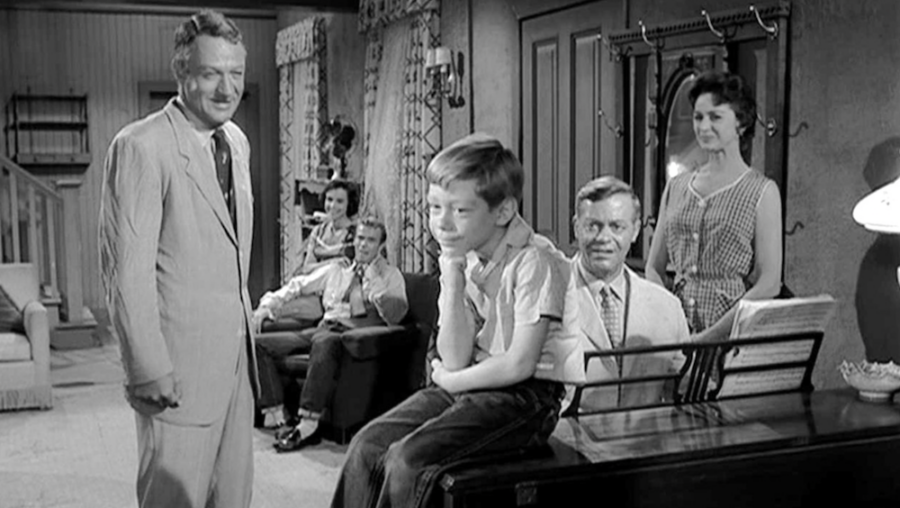
Synopsis: A young boy with the power to make anything happen with just a thought holds his family and neighbors hostage.
Imagine if God was real and had the temperament of a six-year-old boy. That’s the nightmare scenario that the all-powerful Anthony Fremont has subjected a small Ohio town to. Anthony demands everyone smile and always think nice thoughts about him because if they don’t they’ll be sorry…
One of the most chilling episodes of The Twilight Zone ever aired, “It’s a Good Life,” has to be the only episode of a TV show ever to convince an audience to hope for the death of a small child—and at the hands of his own friends and family no less.
Yet anyone even the least bit familiar with “It’s a Good Life”—or its dozens of remakes and parodies—knows that the alternative is far more terrifying.
Five Characters in Search of an Exit
(Original Series, Season 3, Episode 14)
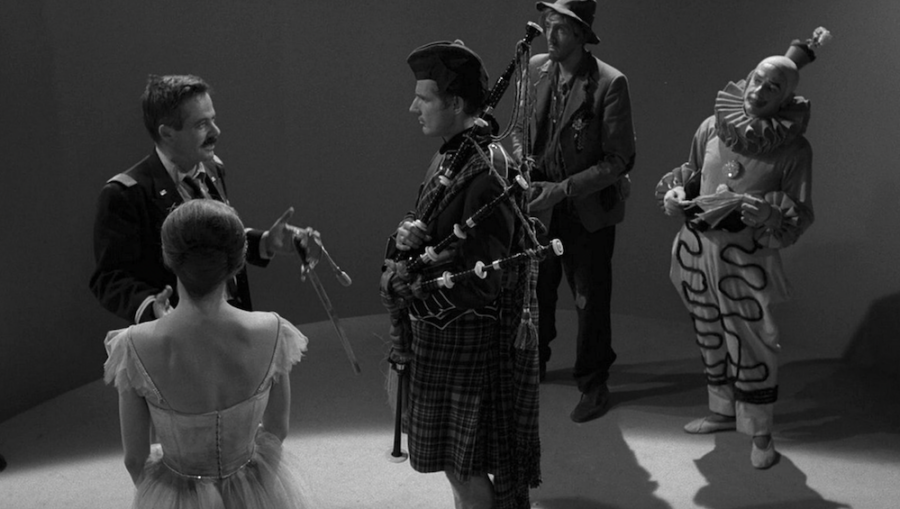
Synopsis: Five strangers, a clown, a hobo, a ballet dancer, a bagpiper, and an army major, wake up in a cylindrical structure with no memory of who they are or how they got there.
“Five Characters in Search of an Exit” may be the most highbrow episode of The Twilight Zone, considering it’s based on the plays Six Characters In Search of an Author by Pirandello and Sartre’s No Exit, but that doesn’t make it pretentious.
On the contrary, it might be one of the show’s most relatable episodes. Who hasn’t had an existential crisis about who they are or where they are at one time or another?
What makes “Five Characters” so good is the slow way that it builds dread as the characters become less and less sure of their situation. Why don’t they need food or water? Why are they in a metal cylinder with no entrance or exit except a hole at the very top? And why is a loud bell periodically clanging from outside?
In the end, it’s revealed that they’re dolls in a Salvation Army-esque donation barrel and that the loud clanging was a volunteer ringing a bell. And you thought Toy Story was deep.
Time Enough at Last
(Original Series, Season 1, Episode 8)
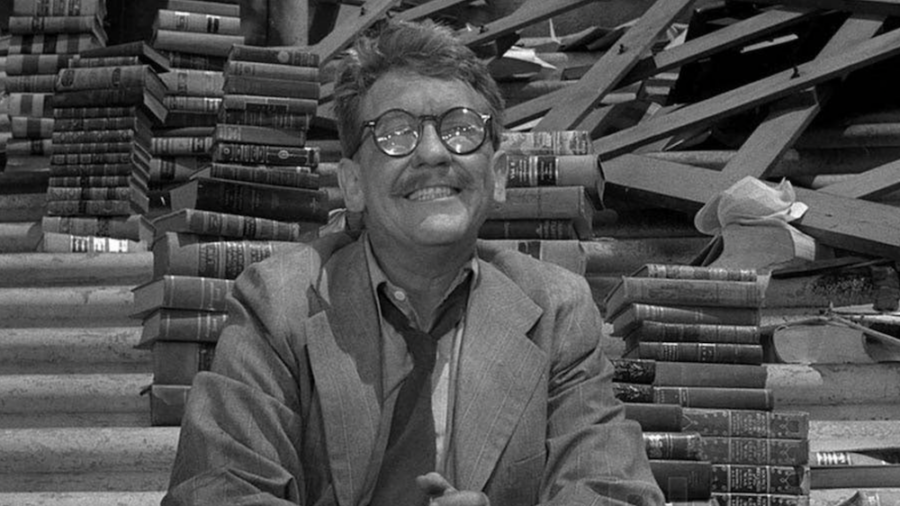
Synopsis: A man who is chastised for always having his nose in a book survives a nuclear apocalypse and suddenly has nothing all the time in the world to read.
“Time Enough at Last” is the perfect example of why a 22-minute runtime works best for the kinds of stories told on The Twilight Zone. A man loves to read, survives a nuclear bomb, finds a library, and then his glasses break.
Try to stretch that premise to an hour, and you start to ask questions like, “Couldn’t he just wear the broken glasses until he finds another pair?”
At a nice, taut half-an-hour (minus commercials), the story moves along briskly and ends before you even have time to start poking holes in the plot. It’s also worth noting that the twist at the end of “Time” is textbook Twilight Zone and pretty much sets the template for the next four seasons.
Eye of the Beholder
(Original Series, Season 2, Episode 6)
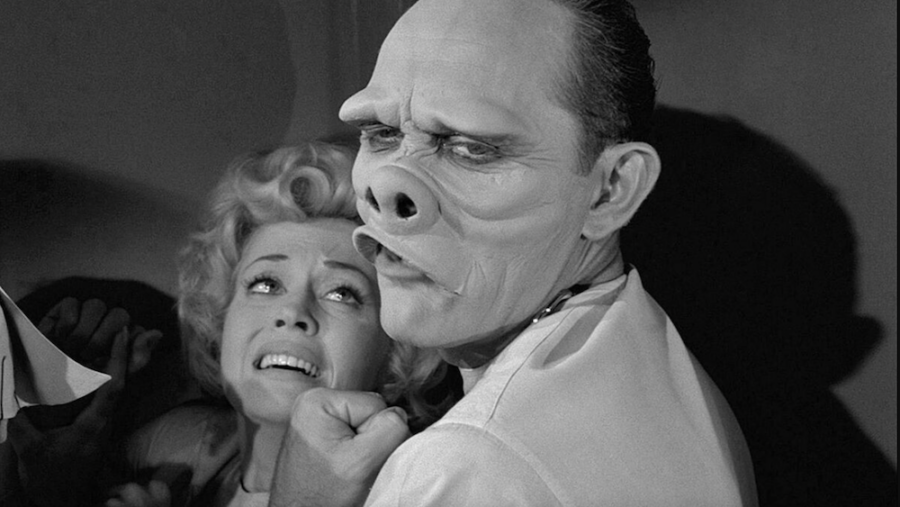
Synopsis: A woman undergoes surgery to look “normal” but is revealed to be conventionally attractive, while the bulk of society appears “disfigured.”
Look, we’re just gonna cut to the chase: this is the episode where everyone has pig faces. We know you were expecting it on the list somewhere, and here it is.
One of the best-known and most parodied episodes of The Twilight Zone, “Eye of the Beholder,” asks the viewer to question beauty standards. If everyone was what we now consider ugly—aka Pig-faced people—then what we now think of as beautiful would become the new ugly right?
In terms of concept, it’s not very nuanced. However, what the episode lacks in intellectual depth, it more than makes up for with the classic slow-burn reveal of the patient’s face and that of the doctors and nurses treating her.
To Serve Man
(Original Series, Season 3, Episode 24)
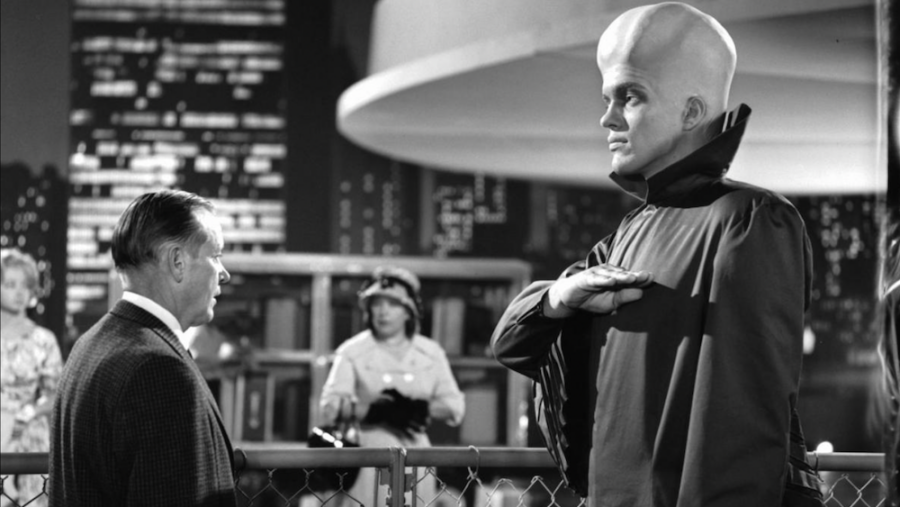
Synopsis: Aliens arrive on Earth with a book titled How to Serve Man and immediately end world hunger and stop all wars. Unfortunately, it’s because the Aliens like their meat plump and stress-free…
“It’s a cookbook!” Those three simple words make up the single best twist in the history of the Twilight Zone. You would be hard-pressed to find anyone alive over twenty—younger if their parents are doing their jobs—that doesn’t know that phrase or some variation of it even if they don’t know its origin.
While the idea of humans becoming free-range cattle for a race of outer-space meat-eaters has been done many times since “To Serve Man” originally aired in 1962, it’s never been executed as well and never as cleverly as on The Twilight Zone.
The Monsters Are Due on Maple Street
(Original Series, Season 1, Episode 22)
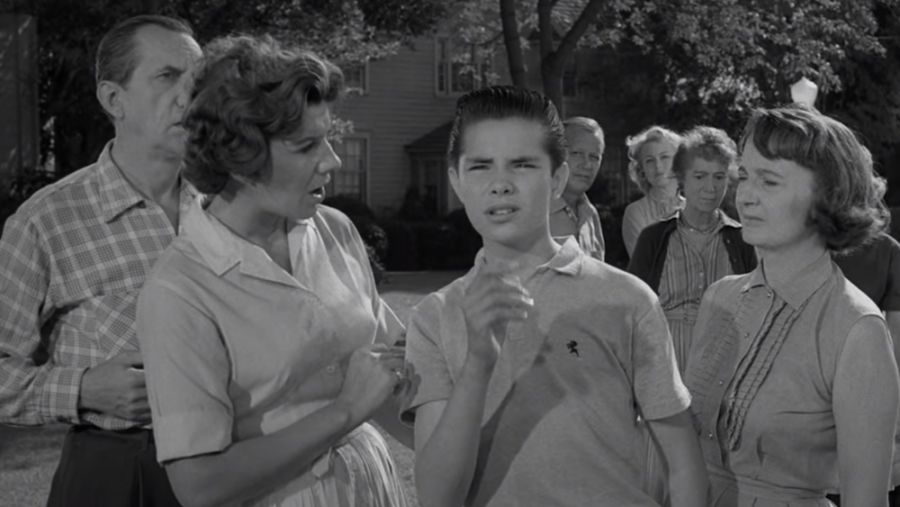
Synopsis: A neighborhood falls into paranoia and suspicion after a power outage.
To say that “The Monsters Are Due on Maple Street” was and remains the most relevant episode of The Twilight Zone ever broadcast is not hyperbole. Originally made as a commentary on Cold War paranoia, “Maple Street” works as an allegory for any frightened mob looking for a scapegoat.
Whether it’s Jews, Communists, Muslims, or drag performers, people will always find someone to blame for everything they perceive to be wrong with the world.
It takes very little prompting for humans to turn against each other, a sad fact that Twilight Zone creator and head writer Rod Serling understood all too well.
The episode’s closing narration is as true today as it was in 1960: “The tools of conquest do not necessarily come with bombs and explosions and fallout. There are weapons that are simply thoughts, attitudes, prejudices… to be found only in the minds of men. For the record, prejudices can kill… and suspicion can destroy… and a thoughtless, frightened search for a scapegoat has a fallout all of its own—for the children and the children yet unborn. And the pity of it is that these things cannot be confined to the Twilight Zone.”

